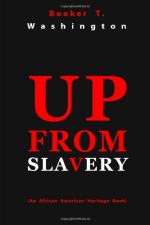I spoke for fifteen or twenty minutes, and was surprised at the close of my address to receive the hearty congratulations of the Georgia committee and of the members of Congress who were present. The Committee was unanimous in making a favourable report, and in a few days the bill passed Congress. With the passing of this bill the success of the Atlanta Exposition was assured.
Soon after this trip to Washington the directors of the Exposition decided that it would be a fitting recognition of the coloured race to erect a large and attractive building which should be devoted wholly to showing the progress of the Negro since freedom. It was further decided to have the building designed and erected wholly by Negro mechanics. This plan was carried out. In design, beauty, and general finish the Negro Building was equal to the others on the grounds.
After it was decided to have a separate Negro exhibit, the question arose as to who should take care of it. The officials of the Exposition were anxious that I should assume this responsibility, but I declined to do so, on the plea that the work at Tuskegee at that time demanded my time and strength. Largely at my suggestion, Mr. I. Garland Penn, of Lynchburg, Va., was selected to be at the head of the Negro department. I gave him all the aid that I could. The Negro exhibit, as a whole, was large and creditable. The two exhibits in this department which attracted the greatest amount of attention were those from the Hampton Institute and the Tuskegee Institute. The people who seemed to be the most surprised, as well as pleased, at what they saw in the Negro Building were the Southern white people.
As the day for the opening of the Exposition drew near, the Board of Directors began preparing the programme for the opening exercises. In the discussion from day to day of the various features of this programme, the question came up as to the advisability of putting a member of the Negro race on for one of the opening addresses, since the Negroes had been asked to take such a prominent part in the Exposition. It was argued, further, that such recognition would mark the good feeling prevailing between the two races. Of course there were those who were opposed to any such recognition of the rights of the Negro, but the Board of Directors, composed of men who represented the best and most progressive element in the South, had their way, and voted to invite a black man to speak on the opening day. The next thing was to decide upon the person who was thus to represent the Negro race. After the question had been canvassed for several days, the directors voted unanimously to ask me to deliver one of the opening-day addresses, and in a few days after that I received the official invitation.
The receiving of this invitation brought to me a sense of responsibility that it would be hard for any one not placed in my position to appreciate. What were my feelings when this invitation came to me? I remembered that I had been a slave; that my early years had been spent in the lowest depths of poverty and ignorance, and that I had had little opportunity to prepare me for such a responsibility as this. It was only a few years before that time that any white man in the audience might have claimed me as his slave; and it was easily possible that some of my former owners might be present to hear me speak.




